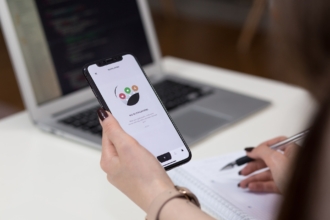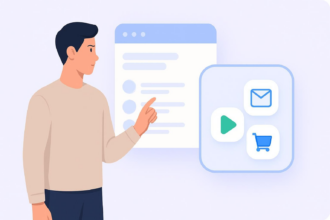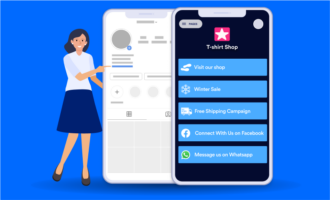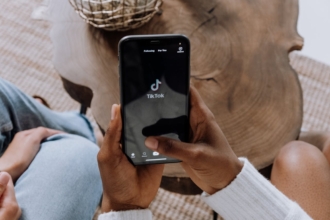$30 million
That’s the number Forbes highest-earning YouTube star made in 2020.
40 million
That’s the number of his subscribers.
9
His actual age.
. . .
There’s no denying that Ryan Kaji is one of the leading child influencers on the planet. According to Forbes, his iconic “Ryan’s World” YouTube channel has turned into a global franchise and is considered on par with children’s characters like SpongeBob SquarePants and Dora the Explorer.
And as noted above, he’s attracted global audiences in the millions.
How did a 9-year-old boy who reviews toys online turn into such a hit? It all began with a simple question Ryan posed to his mom at age three:
“How come I’m not on YouTube?”
That one question quickly led to the family shooting their very first video — a decision that would eventually change their trajectory forever.
The Kaji family’s informal home videos ended up amassing them millions of views on YouTube. But all of this was made possible thanks to one small piece of technology.
You guessed it: The iPhone.
Smartphones like the iPhone are what democratized filmmaking years ago, so that amateurs everywhere — including kids — could pose a simple question and have their dreams turn to reality.
More importantly, iPhone is what turned Ryan’s kernel of an idea into actual footage that generated real money.
In recent days, as the No-Code movement hits the mainstream and democratizing software development becomes the norm, another equally pressing question comes up: how will it affect the coming generations?
We’re coming up on a time when it’s not hard to imagine a kid like Ryan building a SaaS product for other kids using a drag & drop no-code product.
It’s also not all that far-fetched to imagine them making millions at it, too.
The beginning of a new era
“I think no-code is about making stuff that previously required people with technical chops, that now you no longer need those skills,” explains founder and CEO of Makerpad, Ben Tossell.
While no-code software has been around for awhile, it’s only now beginning to gain steam. Take for instance, my company, Jotform. We’ve produced no-code products for the past 15 years. Our easy-to-use online form builder allows you to create without writing a single line of code.
Many more companies have since entered the fold. Webflow, Adalo, Bubble, and Voiceflow are all part of the no-code movement, lowering the barriers to entry and making it possible for people of all ages to design fully functional websites or apps in no time — without needing any programming languages.
It’s fair to say that it’s only a matter of time before kids everywhere latch on to this trend. Soon, we may have the no-code equivalent of Ryan Kaji — a kid making millions with a SaaS product built without coding.
“Just knowing that these kids are learning these tools early on is amazing,” says Tossell. He’s witnessed how the coming generation stands to benefit from the movement. “With kids, I’ve seen it firsthand. We had a workshop recently. And there was a middle school teacher and we were just watching her teach the kids how to build a mobile app.”
In an illuminating article for Medium, Vincent Krouwels also advocates for teaching kids how to build a digital product rather than learn to code. He writes:
Instead of teaching kids programming languages and how to write code, we feel the focus should instead be on getting them to understand how apps work. Who are their intended users? What functionality do those apps require?
This is in essence the difference between coding and programming; knowing what to build and why versus ‘simply’ developing with code.
With no-code, the sky’s the limit for budding entrepreneurs
What truly excites me about no-code platforms is that you can immediately explore new options.
An elementary-school kid can begin building an app or have a site up and running in a matter of days. It’s an incredible educational experience because they don’t have to rely on programming skills to build upon their emerging ideas.
Founder of Dola, Sergio Villaseñor puts it well: “I believe what these tools are going to do for kids is enable them to kind of live a different life, not go down the traditional path,” he explains. “Kids are just going to be able to create their own path and lane and be able to make cool stuff at a very early age.”
Looking to the future, Villaseñor views this movement as a pivotal moment for young entrepreneurs. “What we’re gonna see is the 18 year olds in the next 10 years operate at the business level very much like a 30 to 40 year old now.”
Co-founder of Adalo, Jeremy Blalock, agrees:
“When you grow up around technology things that are little builders in themselves, you just have a deeper understanding and each next generation will be better at it,” he notes. “I think that now people in high school have the opportunity to make money and try things and do things of their own that are totally entrepreneurial and unique.”
No-Code gives freedom for greater self-expression
“Today’s students don’t just see their computers and mobile devices as consumption screens and have the ability to turn them on,” writes Danny Crichton for TechCrunch. “They are widely using them as tools of self-expression, research and analysis”
“The specialized, almost arcane knowledge of data analysis and engineering is being widely democratized for this new generation,” notes Crichton. “And that’s precisely where a new digital divide is emerging.”
Even as he is part of a video empire that boasts millions of subscribers, Ryan Kaji isn’t content with simply relying on his charisma alone. While he poses for the camera and sports a big grin with every shot, according to Forbes, he’s also voiced an eager interest in directing — further continuing to raise the bar with his creativity.
Without access to a smartphone as a tool, none of this would have been possible.
And if the iPhone allowed his star to rise, then it’s not so implausible to think that a million-dollar “kid for kids” app built using no-code could soon be on the horizon.






































































































Send Comment: